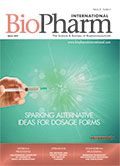Caught in a Conundrum
Do patients get what they pay for when they demand cheaper drugs?
In late February 2019, the Senate Finance Committee called CEOs of major bio/pharmaceutical companies to Washington, DC to testify about the cost of prescription drugs. Senators bemoaned the cost burden on patients and the bio/pharma executives played up the expense of developing new drugs and a complicated payment system. For all the spectacle, expectations for real change are only slightly higher than in the past. Potential solutions under discussion include allowing Medicare to negotiate drug prices; controlling prices based on what is charged in other countries; allowing patients to import drugs from Canada; and eliminating pay-for-delay strategies that discourage generic-drug competition.
Another solution is to bring more generic drugs to market. The basic economic premise that increased competition will lead to lower product costs, however, does not always prove true for the pharma industry. Lower drug prices mean lower margins; convincing manufacturers to produce low-margin drug products-while maintaining quality standards-is not easy. Recently, prices for some generic drugs in short supply have been hiked significantly because the generic-drug manufacturer knew they had no competition.
In response to high drug prices and shortages, a consortium of hospitals launched their own drug manufacturing company; legislation called for the federal government to manufacture generic drugs if the market cannot-or will not-provide drugs at affordable prices (1); and FDA announced a Competitive Generic Therapies pathway to encourage development of generic versions of branded drugs that are off patent but have no generic alternatives (2).
Despite 15 approved biosimilar drugs and 60 in development, adoption of lower-cost biosimilars has been delayed, often due to legal tactics of innovator companies. In a December 2018 statement, FDA promised, “We’re not going to be partners to these deceptions,” and issued guidance documents designed to promote competition for biologic drugs, such as insulin (3).
Perhaps the greatest consequence of cheaper generic drugs is that lower quality products may be entering the supply chain. Recent news reports (4–7) have detailed quality issues associated with generic-drug manufacturing in the United States and abroad, questioned how the drug industry conducts inspections, and highlighted self-policing efforts by manufacturers. FDA responded with a rigorous defense of its oversight activity and the safety of generic drug products (8).
Despite the debate, patients are left to consider if they are paying a price in questionable safety and quality when they demand affordable drugs.
References
1. S.3775, US Senate, 115th Congress, 2nd session (Washington, DC), Dec. 18, 2018.
2. FDA, Competitive Generic Therapies, Guidance for Industry, Draft Guidance (CDER, February 2019).
3. FDA, Statement from FDA Commissioner Scott Gottlieb, M.D., on New Actions Advancing the Agency’s Biosimilars Policy Framework, Dec. 11, 2018.
4. S. Lupkin, “When Medicine Makes Patients Sicker,” Kaiser Health News, Jan. 4, 2019.
5. A. Edney, “America’s Love Affair with Cheap Drugs Has a Hidden Cost,” Bloomberg.com, Jan. 29, 2019.
6. A. Edney, “How a Tainted Heart Drug Made in China Slipped Past the FDA,” Bloomberg.com, Jan. 30, 2019.
7. A. Altstedter and A. Edney, “Culture of ‘Bending Rules’ in India Challenges U.S. Drug Agency,” Bloomberg.com, Jan. 31, 2019.
8. FDA, “Statement from FDA Commissioner Scott Gottlieb, M.D., and Director of FDA’s Center for Drug Evaluation and Research Janet Woodcock, M.D., on the FDA’s Continuing Efforts to Maintain Its Strong Oversight of Generic Drug Quality Issues Domestically and Abroad,” Feb. 22, 2019.
Article Details
BioPharm International
Vol. 32, No. 3
March 2019
Page: 6
Citation
When referring to this article, please cite it as R. Peters, “Caught in a Conundrum," BioPharm International 32 (3) 2019.

Tokyo University of Science Research Team Explores Improved Delivery of Antisense Oligonucleotides
April 18th 2025Using cholesterol-modified oligonucleotides, the research team aims to improve the delivery of antisense nucleotide-based therapies for treating neurodegenerative diseases and brain cancers.